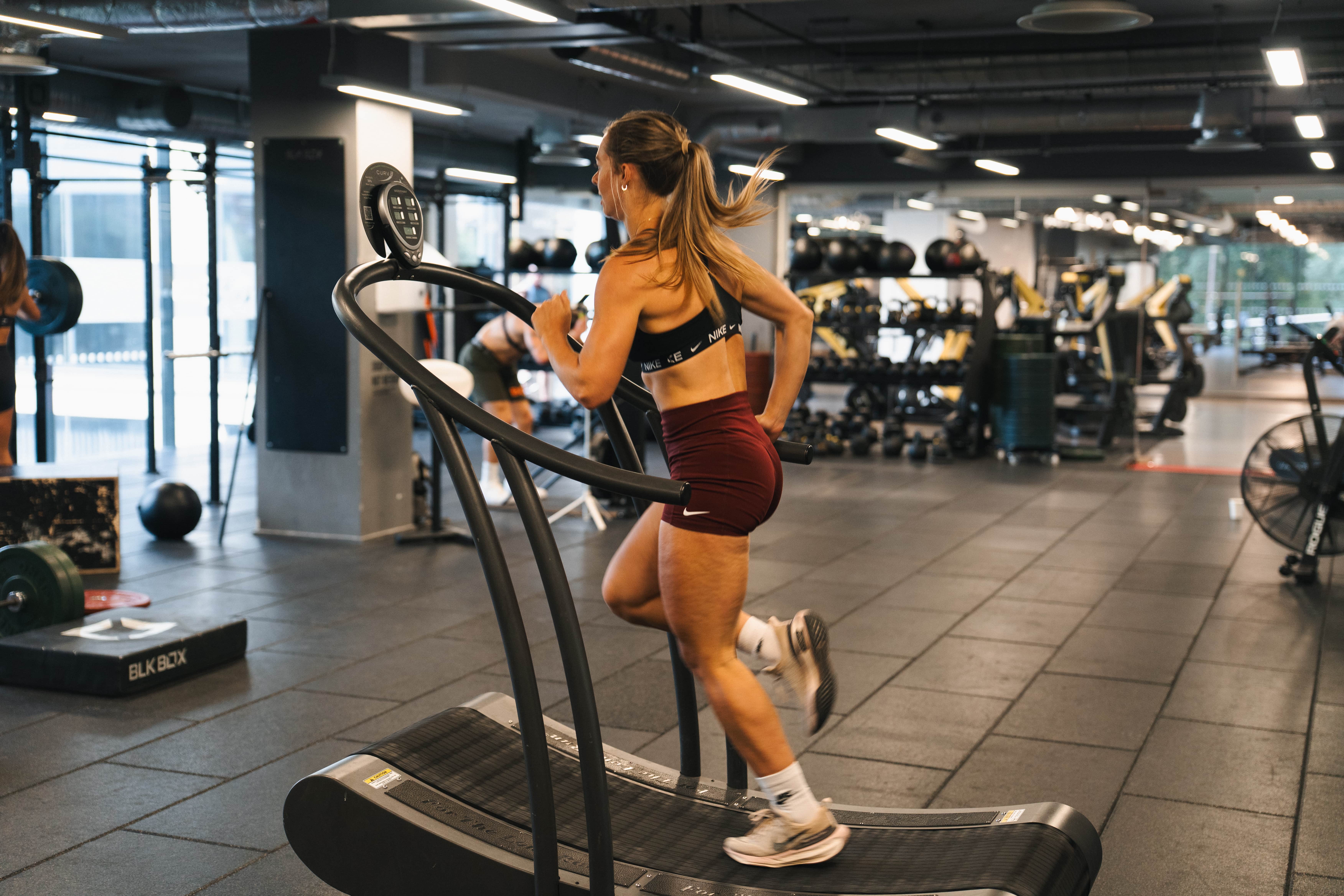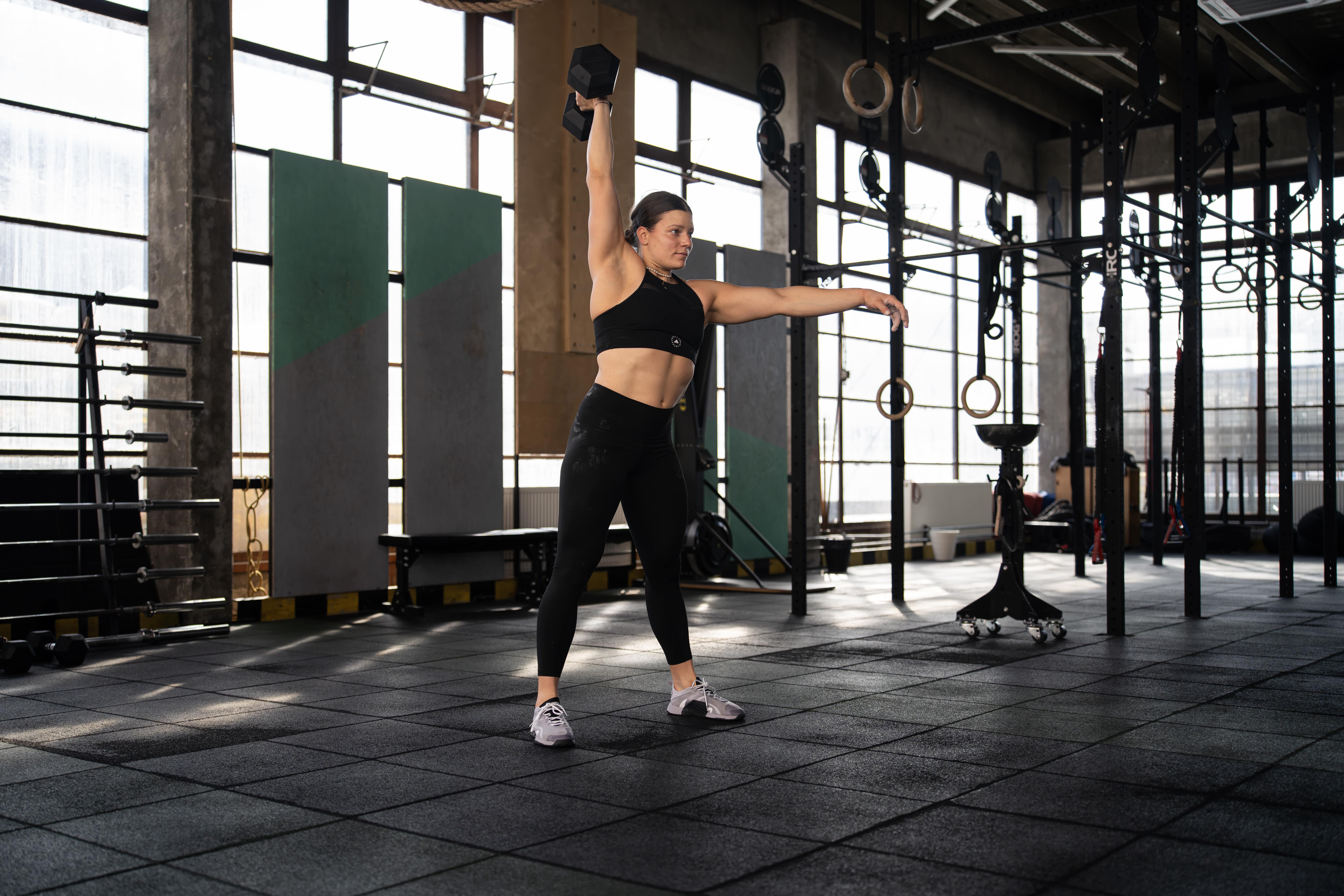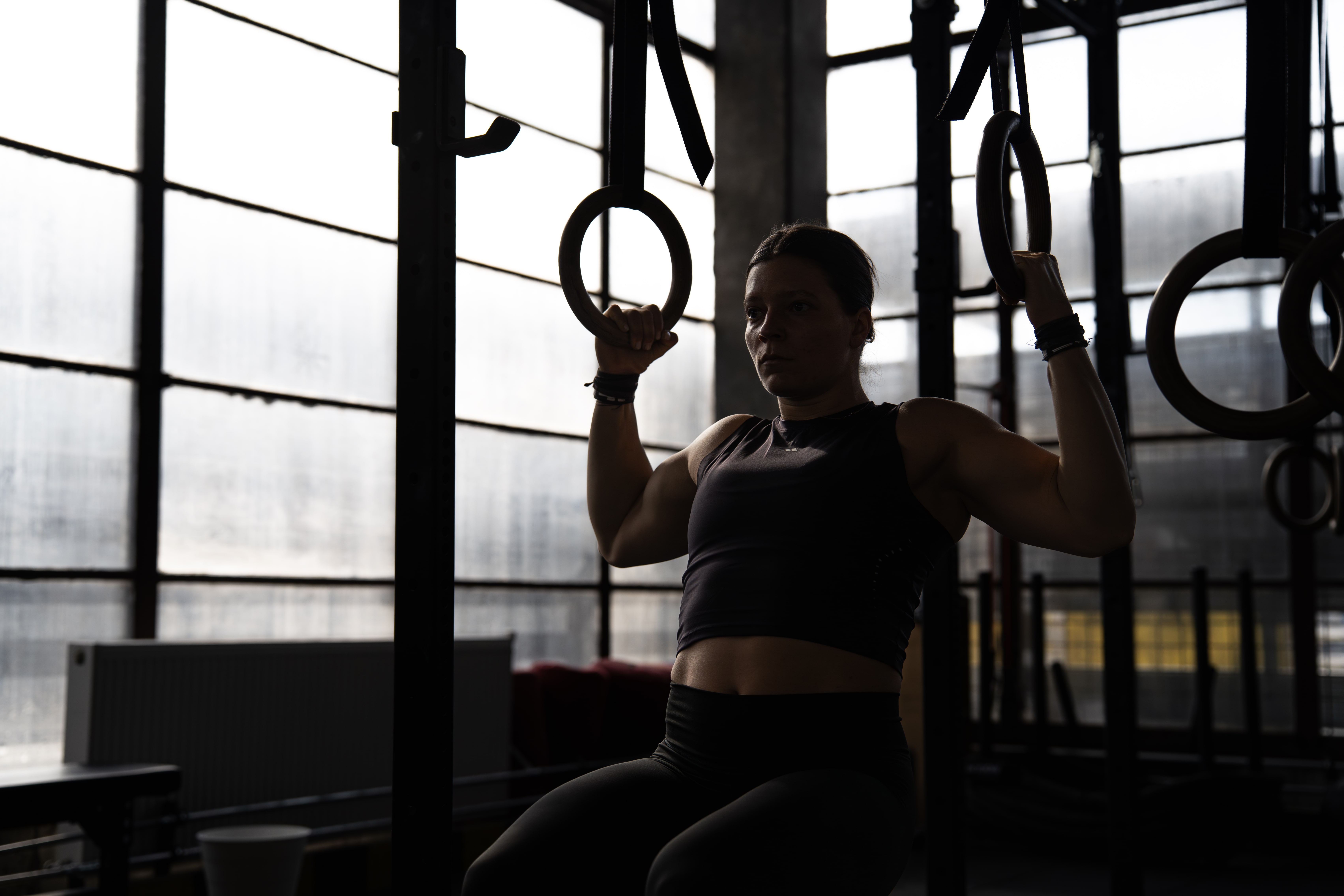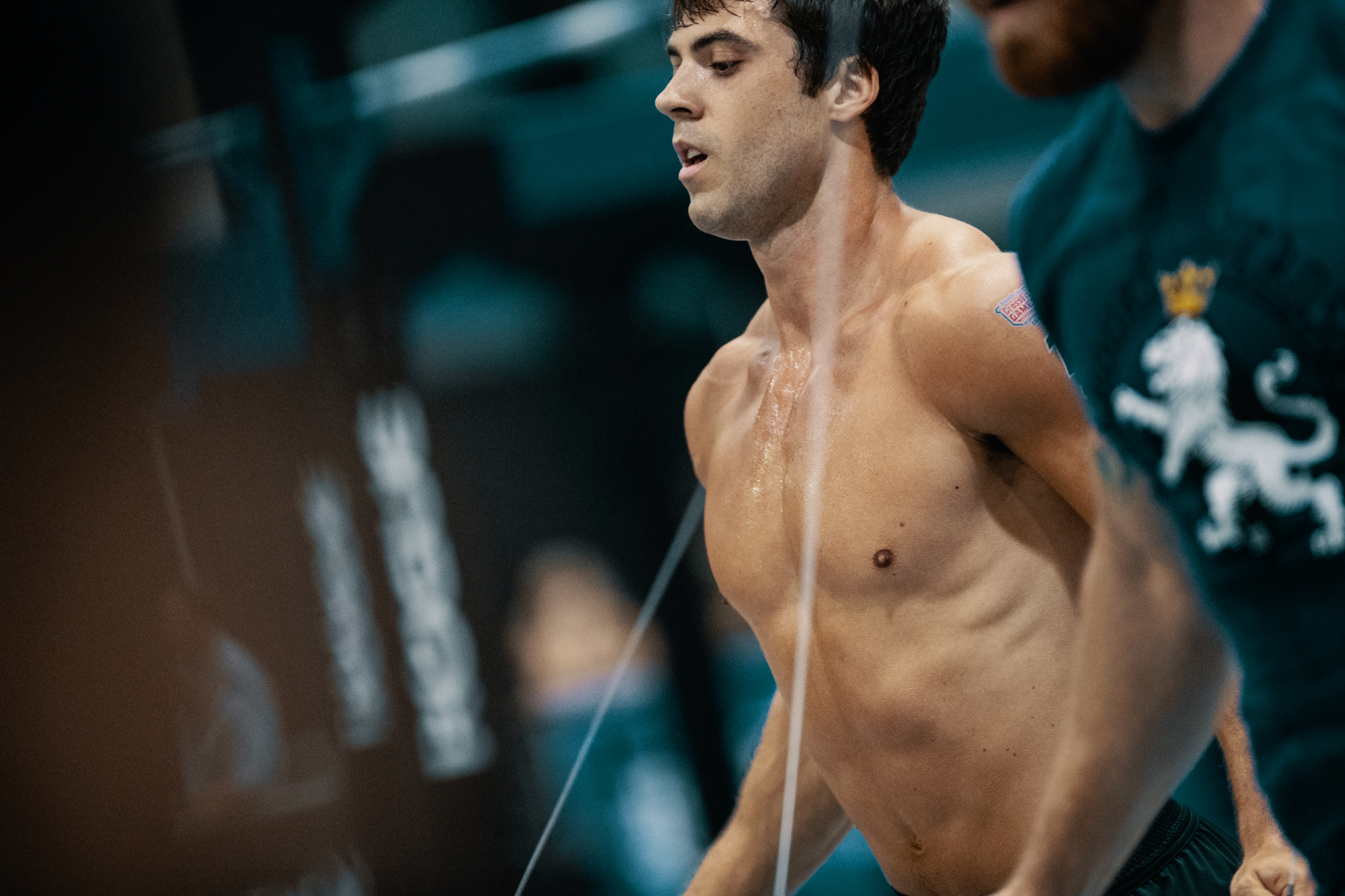The Hyrox race is an extended, grueling test of both strength and endurance that leaves no room for weakness. After slogging through a few of the stations, you might feel the effects of mobility—or the lack thereof. Maybe your knees are achy from the sled pushes. Perhaps your back feels tight from the burpees. Or, you can’t ignore the dull pain in your shoulder as you approach the next station. These are all signs of immobility, and they could be slowing you down, both physically and mentally. Incorporating targeted mobility exercises is key to preventing these issues and ensuring peak performance on race day. Hyrox Mobility is dedicated to addressing these concerns to help you perform at your best. This article will walk you through the ins and outs of Hyrox Mobility, why it matters, and how to improve it to help you crush your next HYROX race.
One valuable tool to help you improve your Hyrox Mobility is the Pliability app. The mobility app features targeted warmups, recovery routines, and videos to enhance your mobility of HYROX and beyond.
What Is Hyrox And Why Is It Becoming So Popular?

Hyrox is a competitive fitness race that combines running with functional workout stations. The format is straightforward: participants run 1 kilometer, then complete a functional workout station, and then rerun 1 kilometer. It’s an intense test of both endurance and strength.
Each event features eight rounds of 1-kilometer runs, along with eight functional movements, including:
- Sled pushes
- Rowing
- Wall balls and more
The goal is to complete the course as quickly as possible. Hyrox is gaining traction globally because it appeals to both elite athletes and everyday fitness enthusiasts. The standardized format across events makes for a fair competition, and the strong sense of community fosters camaraderie among participants.
The Eight Hyrox Stations
A Hyrox event consists of eight functional workout stations that test various elements of fitness from strength to endurance.
The eight stations include:
1. 1km Ski Erg
The first station is the ski erg. While the ski erg is primarily an upper-body movement using the lats and triceps, it also works the:
- Core
- Hip flexors
- Hamstrings
- Calves
- Glutes
This is the first station, so don't go all out. The aim here is to perform the ski erg properly and not rush it.
2. 50m Sled Push
The second movement is the sled push: the heaviest station and one of the most important to get right. Do the sled push well, and you can make up time against competitors. Get it wrong, and you'll tire out your legs for the next run. Split into four lengths of 12.5 meters; you'll have to push the sled over the line, then walk around to make it back the other way.
Practice different positions to find what works best for you in terms of pushing the sled, and train with a sled heavier than the race day weight to account for the flooring (which is usually not as smooth as tracks found in the gym, making the sled feel heavier!).
3. 50m Sled Pull
This station exhibits the most time variability in terms of completion, so it's another one you want to get right. By this time, your legs have been through a 3km run alongside a ski and sled push, so they're pretty tired. You can use three main techniques to pull the sled:
- The arm over pull
- Hip drive pull
- Backward walk
Practice these in your training and choose the one that works best for you. The technique that allows you to shift the most weight with the least effort should be your choice.
4. 80m Burpee Broad Jump
A burpee with a forward jump at the end. The burpee broad jump is the fourth station. Unlike the previous two stations, these don't require you to move heavy weights, but they can be challenging and spike your heart rate. Aim to maintain a consistent pace throughout, rather than starting too fast and then stopping.
5. 1km Row
The 5th station is a 1km row. You'll want to practice your technique, and if you're competing in doubles, be sure to practice switching over, as a smooth changeover can save you valuable seconds. Pace yourself on this station and control your breathing as much as possible before you head back out on your 6th run.
6. 200m Kettlebell Farmers Carry
For many stations, we recommend pacing yourself. The farmer's carry is an opportunity to go out as fast as possible. The less time you spend holding those kettlebells, the better, as you'll minimize the stopping time needed to rest your grip.
Training exercises that improve grip strength, such as practicing running with kettlebells, can be beneficial.
7. 100m Sandbag Lunge
Hitting the glutes and thighs, these sandbag lunges can feel brutal at this late stage in the race. Make sure your knee touches the ground on each rep. Again, you'll want to practice these exercises under fatigue during your training.
8. 100 Reps Wall Balls (75 For Relay)
If those legs weren't tired enough, you finish things off with 100 wall balls. These are a quad burner, but break them into manageable chunks (e.g., 20 reps at a time) and be strict with your rest periods before going back into them (practice this in your training beforehand to find what works best for you).
This is the last station, so you want to push yourself to your limit and use everything in the tank to get over that finish line as quickly as possible!
What’s the Difference Between Hyrox and CrossFit?
While Hyrox and CrossFit may appear similar at first glance, they differ in structure, intensity, and accessibility. Both feature high-intensity, functional workouts, but Hyrox races follow a fixed format: the exact running distances and exercises in the same order at every event. In contrast, CrossFit competitions vary widely and are often announced just before the event begins, requiring competitors to adapt on the fly.
Hyrox events typically last 60 to 90 minutes, longer than most CrossFit workouts, and are designed around straightforward, low-risk movements that are accessible to the average gym-goer. CrossFit, on the other hand, often incorporates more complex, technical exercises that demand extensive practice to master. Running makes up half of a Hyrox race, whereas it plays a much smaller role in most CrossFit competitions.
How Fit Do You Need to Be for a Hyrox Event?
While the race is undoubtedly challenging and requires training, Hyrox was designed with the average gym-goer in mind.
To make their events suitable for everyone, Hyrox provides four different race divisions, creating an inclusive competition for all fitness levels.
- Open: This consists of the standard Hyrox race, which is challenging yet achievable for most gym-goers.
- Individual Pro: For the more experienced Hyrox athlete, this division provides greater challenge by involving heavier weights.
- Doubles: Work as a pair to take on the race! You'll complete the 1km runs together but you'll split the workload of the functional exercises.
- Relay Teams: Split between four individuals, this race is ideal for gym, corporate, or friendship teams.
Why Training Matters: Even for an 'Achievable' Hyrox Race
Hyrox races do not have any time limits, nor do they require any qualifications. According to Hyrox itself, 98% of participants complete the race. While the race is certainly achievable for most people, it still requires some preparation and training to ensure you're ready to perform each exercise.
Even if you're not aiming to set a personal best, we still advise training for this event to minimize your risk of injury.
What are the Benefits of Hyrox?
Hyrox races challenge your:
- Strength
- Power
- Endurance
- Cardiovascular fitness
If you're wondering whether it's worth tackling an event, you'll be glad to know there are multiple benefits to be had, including:
- Improve athletic performance: Training for Hyrox involves a combination of strength, endurance, and mobility, all of which can translate to better athletic performance, including improved lifts in the gym.
- It can help with fat loss: Hyrox training is intense and involves a mixture of cardio, strength, and endurance. Training for the event can help burn a significant number of calories, making it easier to maintain a calorie deficit and achieve fat loss.
- Aid everyday activities and movements: The improvements in strength, flexibility, and mobility also contribute to everyday activities, enhancing movement efficiency and minimizing injury risks.
- It's a new challenge: Hyrox is a brand-new challenge that many gym goers won't have tried before. If you're someone who performs best when they have a goal to work towards, signing up for a Hyrox event can be a great way to provide some training variation and keep you motivated.
- They're sociable: While training for Hyrox can be challenging, the events are enriching and sociable. On competition day, you'll be cheered on by spectators and you'll rival like-minded individuals who share similar goals to you. You'll also become a part of the #HYSOCIETY, uniting everybody involved with Hyrox, from athletes to judges!
6 Hyrox Mobility Drills to Improve Speed, Power, and Flow

1. A Better HYROX Performance Starts With Ankle Mobility
Efficient ankle dorsiflexion is crucial for movements such as:
- Running
- Lunging
- Sled pushing
- Wall balls
A lack of ankle mobility leads to compensatory patterns, such as knee valgus or hip external rotation, which increase the risk of injury.
Hoch et al. (2012) found that restricted dorsiflexion is associated with an increased incidence of lower extremity injuries.
Strategies to Improve Ankle Mobility
- Calf Stretching: Static stretching of the gastrocnemius and soleus muscles improves dorsiflexion.
- Ankle Banded Mobilizations: These promote posterior glide of the talus, enhancing active range.
- Eccentric Calf Raises: Strengthening the ankle complex through eccentric loading can enhance mobility and resilience.
2. Power Up Your HYROX Performance With Hip Mobility
Hips are the powerhouse for nearly all HYROX movements, from sled pushes to lunges. Restricted hip flexion, extension, and external rotation limit:
- Stride length
- Squat depth
- Functional strength output
A study by Fredericson et al. (2005) highlights that poor hip mobility is a major contributor to kinetic chain dysfunctions.
Strategies to Improve Hip Mobility
- 90/90 Hip Stretch: Targets the external rotators and promotes a greater range of rotation.
- Dynamic Lunge Variations: Incorporates movement patterns to enhance hip flexion and extension through active movement.
- Band-Resisted Hip Openers: Utilize band resistance to mobilize the hip joint capsule.
3. Unlocking Your HYROX Potential With Thoracic Spine Mobility
An often-overlooked area, thoracic spine mobility is crucial for rowing, wall balls, and maintaining an efficient running posture. A stiff thoracic spine can lead to overcompensation in the lumbar spine or shoulders, contributing to injuries.
Hibbs et al. (2008) observed that better thoracic extension and rotation are correlated with reduced shoulder dysfunctions.
Strategies to Improve Thoracic Spine Mobility
- Cat-Cow Movements: Promotes segmental spinal articulation.
- Open Book Stretches: Enhances thoracic rotation.
- Foam Roller Extensions: Focuses on thoracic extension over a fixed point.
4. Don’t Overlook Shoulder Mobility for Better HYROX Performance
Overhead movements, such as wall balls, farmer carries, and ski erg strokes, demand significant shoulder flexion and external rotation. Poor shoulder mobility compromises force production and increases strain on the rotator cuff.
A study by Wilk et al. (2009) found a strong relationship between limited shoulder external rotation and shoulder injuries in overhead athletes.
Strategies to Improve Shoulder Mobility
- Sleeper Stretch: Focuses on improving internal rotation.
- PVC Pass-Throughs: Encourage active range in overhead positions.
- Wall Slides: Reinforces scapular control while promoting shoulder flexion.
5. Why Improving Hip Flexor Flexibility Matters for HYROX Success
Due to the high running volume in HYROX, chronic hip flexor tightness can impair stride mechanics and lumbar stability.
Tight hip flexors are associated with anterior pelvic tilt and compromised glute activation, according to Kendall et al. (2005).
Strategies to Improve Hip Flexor Flexibility
- Kneeling Hip Flexor Stretch: Targets the iliopsoas and rectus femoris.
- Psoas Release Techniques: Manual therapy or ball pressure can aid in tissue extensibility.
- Active Mobility Drills: Incorporating leg swings and lunge walks.
6. Improve Your HYROX Performance With Wrist and Forearm Mobility
Carrying implements and exercises like rowing and ski erg strokes stress the wrists and forearms. Limited wrist extension can affect grip endurance and mechanical efficiency.
Research by Linscheid and Dobyns (1996) confirms that decreased wrist extension range correlates with reduced upper extremity performance.
Strategies to Improve Wrist Mobility
- Wrist Flexor and Extensor Stretching: Standard static holds to increase passive range.
- Quadruped Wrist Rocks: Integrates wrist extension under load.
- Strengthening Grips: Using grip trainers to build end-range strength.
Pliability x HYROX: A Partnership for Peak Performance
It’s official: Pliability is now the Official Stretching Partner of HYROX. Pliability is here to help athletes improve their flexibility and mobility, enabling them to be pain-free and perform at their best in every race.
Related Reading
6 Essential Hyrox Recovery Tips You Can’t Miss

1. Keep Moving: Active Recovery for HYROX Success
When you push your body to the limit in a high-stakes workout like HYROX, it’s tempting to stop moving altogether while you recover. But that’s the worst thing you can do. Staying active on rest days helps your body recover from intense training and competition.
Gentle, low-intensity movements increase:
- Blood flow to your muscles
- Clear out waste products
- Reduce soreness
How to Listen to Your Body and Choose the Right Recovery Workout
Quite simply, you’ll feel better if you keep moving. Before you start, it’s essential to listen to your body. Watch for signs of:
- Fatigue
- Low energy
- Decreased strength
Select an active recovery workout or activity that suits your needs.
Some of my favorites include:
- Easy runs are also known as absorption runs.
- Brisk walks.
- Yin Yoga with Centr expert Tahl Rinsky.
- Foam rolling like this Roll & Release session with Ingrid Clay.
- Swimming Stretching sessions like this full-body loosener with Sylvia Roberts.
2. Soreness Doesn’t Stand a Chance: Recovery Work to Get Back on Track
Letting tight muscles linger because you’re just not motivated? Recovery work can feel like a chore, but it’s essential to stay on top of any pain points. Dan’s advice is to switch your mindset. “Focus on reps, not time. Instead of saying I’ll use a foam roller for 5 minutes, do 15 reps per muscle group. It gives you more structure and feels more rewarding.”
Work these recovery reps into your daily schedule. That could include:
- Mobility work
- Light stretching
- Using a foam roller, massage stick, or lacrosse ball
- Massages
3. Get Your Mind Right: Managing Pre-Race Stress and Anxiety
Whether it’s your first race or you’re aiming for a podium finish, the pressure to perform at HYROX can feel intense. And stress or anxiety can impact both your mental and physical recovery. Targeted breathwork techniques, such as box breathing and pursed lip breathing, are a key tool to help you fight back.
They can:
- Anchor your pre-race rituals.
- Calm your nervous system and help get you focused.
- Help you downregulate after an intense training session.
- Boost athletic performance and even help manage pain.
Stress can hinder muscle growth, disrupt hunger signals, and lead to your body storing fat. To maintain peak performance, it’s essential to stay on top of it. Our Stress Relief Toolkit can help.
4. Lock in Your Race Skills with Sleep
“Sleep is the foundation of all recovery. Without it, nothing else matters,” says Dan. “One of the biggest and best investments in your health that you can make is buying a quality mattress.” Dan is not overstating the benefits of sleep. You know you’re not going to feel ready to race if you barely slept a wink, but did you also know that a lack of sleep can lead to low energy levels, sloppy form, and increase your risk of injury?
Why Sleep Is Your Most Underrated Training Tool
Too little sleep also spikes your body’s production of cortisol (the stress hormone), which leads to muscle breakdown. That’s why setting up a regular sleep routine is as crucial as sticking to your training routine.
It will help you consolidate:
- Muscle gains
- Maintain good cardiac function
- Improve metabolism
- Lock in all those new race skills you’re learning
If you’re struggling to achieve regular, quality sleep, try the 10-3-2-1-0 method, or match your sleep problem to 10 science-backed fixes. Need a nightcap? Try these drinks for a better night’s sleep.
5. Fuel Right to Power Over the Finish Line
Food is fuel, and when you’re training for an event as intense as HYROX, you need to make sure you’re getting the right fuel at the right time. That applies to both your training and your race-day meals.
You’ll find everything you need to know in the HYROX nutrition guide from Centr’s resident sports dietitian, Angie Asche.
Fuel Your Recovery: What to Eat Before and After HYROX
When it comes to recovery, Angie recommends prioritizing:
- Protein, polyphenols, and magnesium for muscle repair and energy replenishment.
- A balanced diet that supports overall performance and accelerates recovery.
- Opt for a plant-based option.
6. Mobility Work is Key for Race Day Prep
Want to crush all those functional stations and take those turns at maximum speed? Flexibility and joint mobility are key for executing HYROX movements efficiently and effectively. “More mobility means fresher legs and better performance,” says Dan. Dan uses the foam roller twice a week and massage stick every other day to release tight spots and aid mobility.
Other methods to stay mobile and flexible include:
- Incorporating dynamic warm-ups before training.
- Static stretching in cool-downs.
- Targeted mobility sessions that help you move better in everything you do.
Related Reading
Improve Your Flexibility with Our Mobility App Today | Get 7 Days for Free on Any Platform

Hyrox competitions test your fitness through a combination of running and functional movements, so improving your flexibility and range of motion can help you perform better and recover faster.
Hyrox mobility focuses on improving your performance in each of the movements you will encounter in the competition.
Pliability: Mobility Training Built for Athletic Performance
Pliability offers a fresh take on yoga, tailored for performance-oriented individuals and athletes.
Our app features a vast library of high-quality videos designed to:
- Improve flexibility
- Aid recovery
- Reduce pain
- Enhance range of motio
Pliability offers daily-updated, custom mobility programs for individuals seeking to optimize their health and fitness. It also includes a unique body-scanning feature to pinpoint mobility issues. If you're feeling limited by pain or your ability to move, Pliability aims to complement your existing fitness routine and help you move more effectively.
Sign up today to get 7 days free on iPhone, iPad, Android, or on our website. Our mobility app helps:
- Improve flexibility
- Aid recovery
- Reduce pain
- Enhance range of motion

.jpg)

.jpg)
.jpg)
.jpg)


